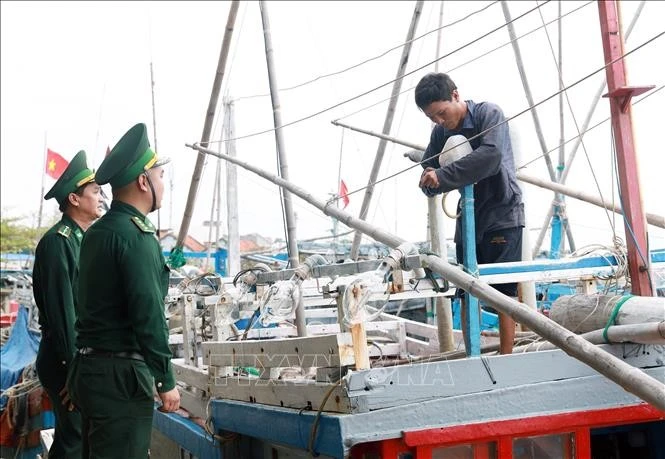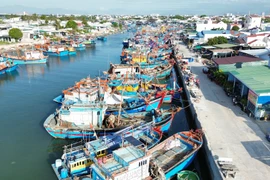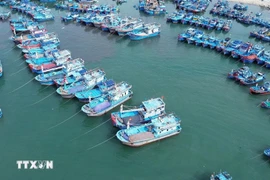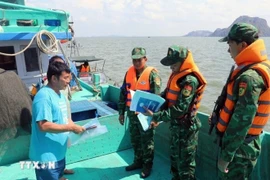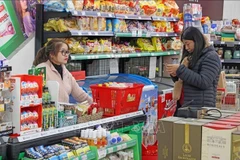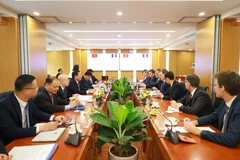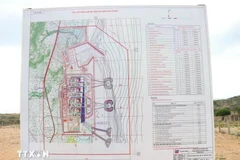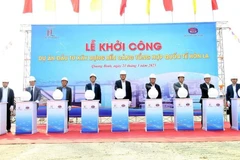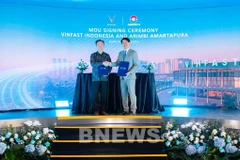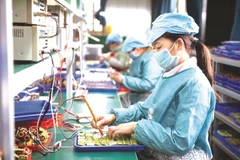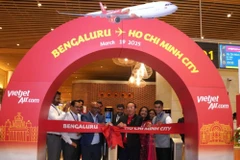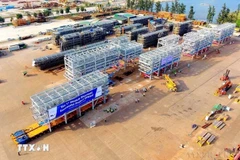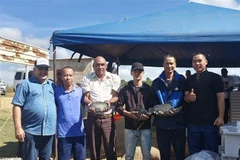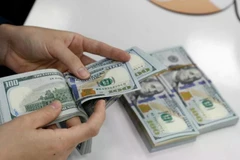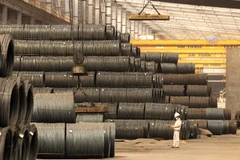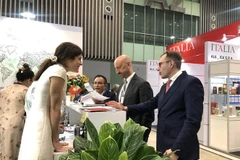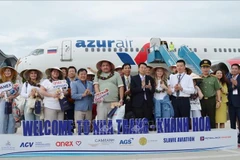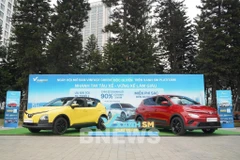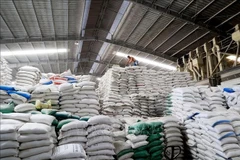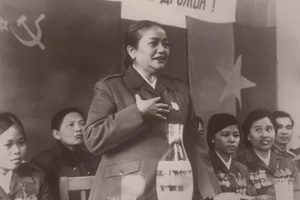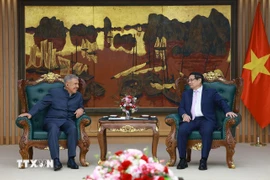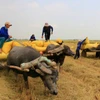Phu Yen (VNA) – Vietnam has been making progress in combating illegal, unreported, and unregulated (IUU) fishing with comprehensive and drastic solutions put in place, said Vu Duyen Hai, Deputy Director of Fisheries and Fisheries Resource Surveillance Department under the Ministry of Agriculture and Environment.
Speaking to the Vietnam News Agency on the sidelines of a recent meeting held between the national steering committee for anti-IUU fishing and central provinces to prepare for the European Commission (EC)'s fifth inspection slated for late March, Hai said that under directions from the Party Central Committee's Secretariat and the Government, the political systems in localities have taken concerted and strong solutions to IUU fishing.
This has brought about observable results, especially in handling "three no's" fishing vessels (those without registration certificates, fishing licenses and inspection certificates) and controlling raw materials imported into Vietnam.
The national fisheries database and the vessel monitoring system (VMS) have been completed, helping localities oversee their fleets. Vessel and VMS data have been made transparent. These are positive results demonstrating localities' efforts over the past years to remove the EC's “yellow card” warning on Vietnamese seafood, Hai said.
The official clearified that many localities have shown significant progress in addressing the problems pointed out by the EC. Strong moves have been made to handle the vessels infringing foreign waters, violating VMS rules, not entering ports for unloading as regulated, or failing to meet operational conditions.
The former Ministry of Agriculture and Rural Development (now the Ministry of Agriculture and Environment) has fine-tuned the institutional framework in accordance with the EC's recommendations, he went on, adding that serious wrongdoings have been dealt with stringently.
Many provinces and cities have adopted flexible solutions to monitor fishing fleets at sea and in fishery ports. Previously, it was difficult for authorities to track where vessels were. Now, thanks to information technology applications and well-managed databases, all data on vehicles operating in various sea areas are collected and updated daily. When a violation is detected, data are sent back to local authorities so that law enforcement forces at sea and on land can handle according to regulations. Through such close and regular monitoring, fishermen have improved their law compliance awareness.

Vu Duyen Hai, Deputy Director of Fisheries and Fisheries Resource Surveillance Department under the Ministry of Agriculture and Environment. (Photo: VNA)
In the upcoming inspection, the EC will evaluate Vietnam's electronic traceability system. While the EC plans to apply this system from October 2026, Vietnam started implementing it in January 2024. Information of all vessels that enter/exit ports and their catches is updated on Vietnam's electronic traceability database, Hai emphasised.
According to him, the EC highly values and is recommending Vietnam officially and mandatorily apply this system. However, the country still faces limitations regarding information technology infrastructure at fishery ports and fishermen's application capabilities.
In 2025, if localities prioritise resources for investment, training, and guiding fishermen in using this system, its application could be made mandatory for all fishing vessels. This is a sustainable solution that will enable Vietnam to easily show its compliance to the EC. It will help Vietnam not only have the EC's "yellow card" lifted but also overcome all barriers in international markets, he noted.
Currently, the issuance of statements of catch and catch certificates to complete traceability documentation has been integrated into Vietnam's electronic traceability database. Therefore, this information is ensured to be truthful, accurate, objective, and unalterable.
To date, Vietnam has made efforts to address the issues of the EC's concerns, resulting in significant improvements. However, the way localities report and summarise information has not clearly highlighted these changes, Hai said, adding assistance will be given to help them show their progress more clearly to the EC.
Regrading issues that central coastal provinces should focus on in the IUU fishing combat, he noted that the fleets of eight central provinces and cities – Hue, Da Nang, Quang Nam, Quang Ngai, Binh Dinh, Phu Yen, Khanh Hoa, Ninh Thuan – regularly move to fishing grounds in the North and South for exploitation.
To effectively manage fishing activities, the localities should allocate more resources, increase the application and improve the understanding of the electronic traceability database, and apply information technology to management.
Another important issue is that the number of small vessels in central localities is still large while private wharves and ports still exist in some places. Therefore, more personnel should be arranged to inspect and monitor all vessels, the official said.
Vietnam has been working hard to carry out the EC’s recommendations about IUU fishing prevention and control, towards the goal of having the "yellow card" warning lifted.
The EC issued a “yellow card” warning for Vietnam in this regard in 2017. The "yellow card" is followed by a "green card" if the problem is resolved or a "red card" if it is not. A “red card” may lead to a ban on aquatic exports to the EU./.
